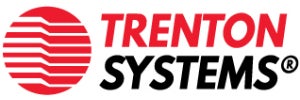When you think about factors that impact a computer’s performance or reliability, extreme temperature fluctuation is at the top. Whether hot or cold, the strain it places on internal components is harsh. You may have heard the rule of thumb:
For every 10°C increase in internal temperature, the life of the computer is cut by 50%.
That’s why the industrial and military sectors alike demand certifications to specific environmental compliance tests that warrant safe operation under tough settings.
An industrial or military computer’s temperature varies depending on multiple components and / or factors. One thing is for certain, the wider the temperature range, the higher the component cost but a much lower total cost of ownership (TCO).
A standard computer is:
- Low-end CPU with a low TDP
- Lower component frequencies where applicable
- Cheaper material sciences (metal, plastic, etc.)
If you fall within the above three categories, your likely ambient temperature range is going to be 0°C to 30°C.
This means that the computer should function accordingly within those ranges, anything outside of it and you will run into issues.
For most ruggedised servers or computers, the desired temperature range is going to be 0°C to 50°C, at times even -10°C to 50°C.
The way you get to the higher temperatures and have normal functionality without issues is due to higher-rated components.
For example, we at Trenton Systems may test over 100 different components on a single board at a time. Certain components may not make the cut to reach the higher temperatures. Therefore, we will look for a better component to increase system stability and reliability at higher temperatures.
Think of it as identifying the weakest link then making it stronger or replacing it with a better component. Once that is done, we re-test and make sure we reach the highest temperature under maximum stress.
A wide temperature range can go from -40°C to 70°C. At this level, you are really talking about your fanless, sealed, low TDP, embedded PCs.
Think of it like an embedded PC that is built solely for this purpose. The goal is to build enough features to capture a larger audience but have the durability and ruggedness so that it can withstand truly extreme conditions.
An example of such a system that we are currently designing is a COM Express Type 7.
One of the best ways to test a computer system’s ability to withstand harsh conditions is through simulations.
You can test functions like airflow and thermal flow, fluid dynamics or computational fluid dynamics, how things are radiating and much more.
It gives you a good base on what to test for and what to expect.
At Trenton Systems, our test engineers can place over 100 probes on a board before we place the system into the ‘oven’ or test chamber. This oven lets us control the environmental factors, while the probes report on temperature fluctuations.
Once we have all the data we need, our engineers calculate the mean time between failures (MTBF) for those specific components, then write down the temperature max for the weakest link on the board. That is the number you see on our datasheets.
If 50 components on the board work perfectly fine at 65°C but one component keeps running into issues at 55°C, our engineers will notate the lower number as our max. We focus on the system’s stability for our customers not the best performing component.
If your system is running hot, there are things you can do to improve the internal temperature to keep your components from failing. Replacing the component with a higher rated part is most likely your best bet.
You could also look at airflow and see if you can move things in any way to improve cool air reaching the components and hot air exiting the chassis fast.
For example, our engineers look at thermal imaging to identify the areas that heat up real quick and then it’s back to the drawing board for improvements.
Standard computers do not make the cut for specific programs or applications. They may save you a buck or two in the beginning, but shortly thereafter, critical failures erupt and you are back at square one.
An extreme or wide temperature computer system outperforms regular functions and also ensures the same performance in harsher settings.
Find a computer manufacturer that understands the different certifications, tests and implications to make a wide temperature computer and rest assured that your program or application will run smoothly for years to come.

